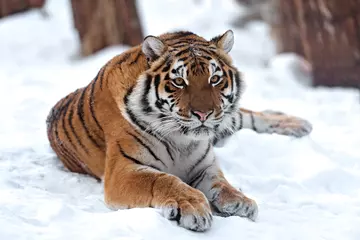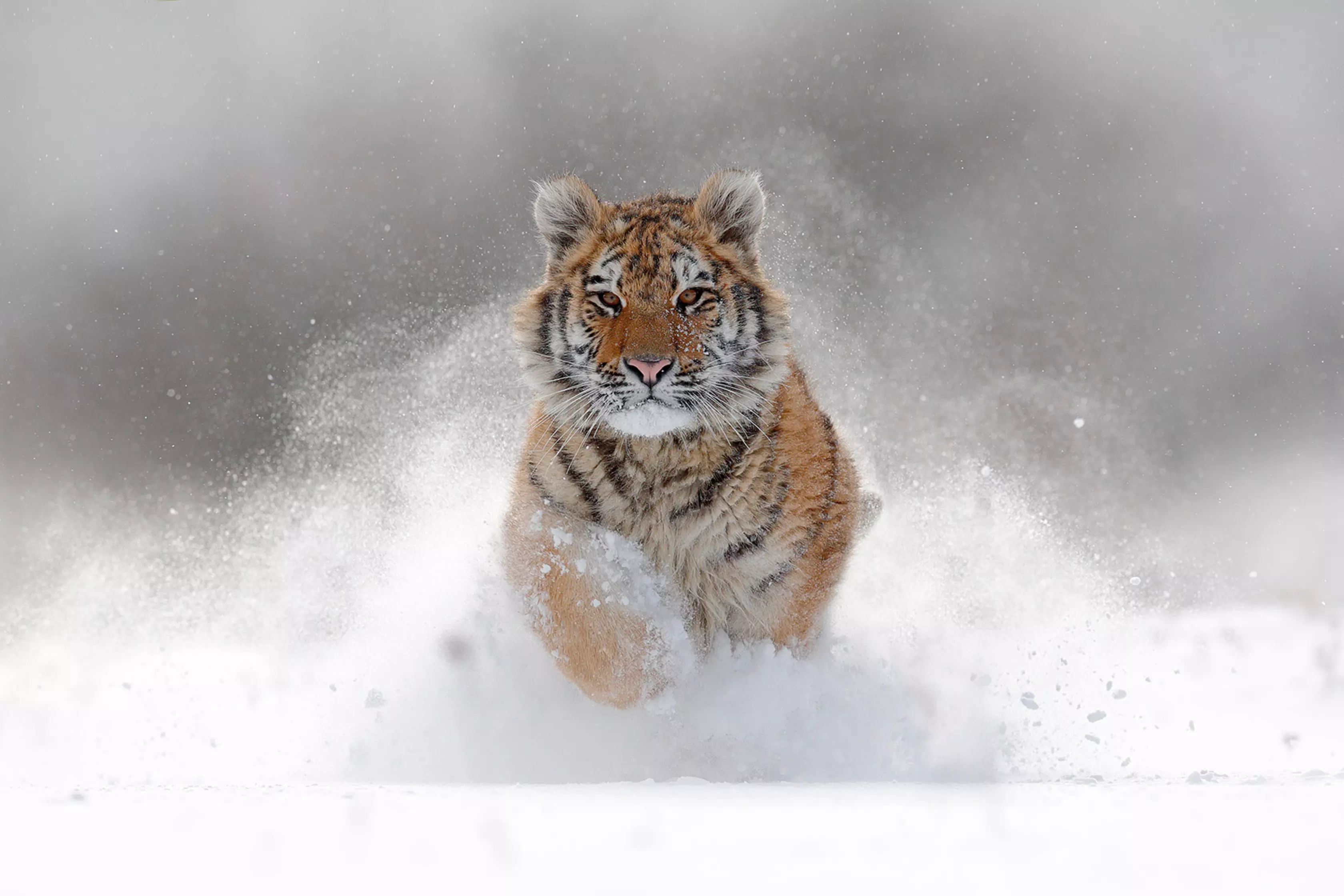
The Amur tiger, or Siberian tiger, is the world’s largest big cat. Endangered in the wild, ZSL is working to protect the species as part of WildCats Conservation Alliance.

Amur tiger habitat
Amur tigers live in Russia, northern China and Korea, among dense forest and mountains. These parts of the world experience long winters so tigers can often be found against a back drop of deep snow. Amur tigers are often solitary in the wild and are powerful hunters, with large ranges.
Amur tiger adaptations
Amur tigers have the lightest coat colour of all tigers, helping them with camouflage in their snowy habitat. They also have longer and thicker fur because of the colder climate, with a thick mane around the neck and extra fur on their paws.
Amur tiger threats
There are estimated to be between as few as 265–486 Amur tigers remaining in the Russian Far East. They face several threats in the wild, including:
- Human-Tiger Conflict and poaching
- Habitat loss due to forest fires and logging
The Amur tigers in the wild today are descendants from an even smaller population. Their genetic similarities makes them particularly vulnerable to adapting to new pressures, like diseases or climate change.

Amur tiger conservation
In the 1940s, Amur tigers were on the brink of extinction with fewer than 50 individuals remaining in the wild. In 1947 after WW2, Russia became the first country to ban tiger hunting and offer tigers full protection. The hunting of their main prey species, boar and deer, was also restricted, helping the tiger populations to climb to around 400 by the early 21st century. Their conservation status was subsequently downgraded from Critically Endangered to Endangered.
This conservation success story has sadly been short-lived as numbers are in decline once more. But we’re working to preserve and protect tiger habitat through WildCats Conservation Alliance, using camera traps to track poaching and building relationships with people to increase the awareness of protecting these fantastic felines.
